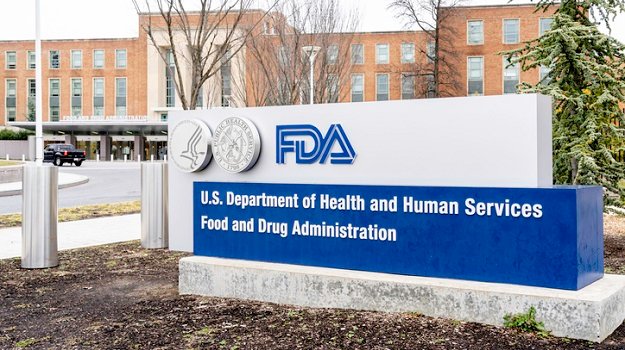Pictured: Sign in front of FDA building/iStock, JHVEPhoto
The director of the FDA’s Center for Biologics Evaluation and Research (CEBR) Peter Marks said he’s reasonably comfortable with the progress being made to fill up to 500 vacancies at the agency’s Office of Therapeutic Products (OTP).
“The OTP is well into the reorganization process. Most of the leadership, but not everyone, has been filled now in terms of office heads,” Marks told BioSpace.
The OTP was established in March 2023 to deal with the ever-increasing pace of cell and gene therapies. It is the first super office at CBER, with six sub-offices, 14 divisions and 33 branches. This brings the FDA’s total number of super offices to three. The creation of such an office brings with it structural changes that should improve discipline alignment, increase review capacity and enhance expertise.
On July 31, CBER named Nicole Verdun as the new director of the super office, taking over from Acting Director Celia Witten. Verdun is no newcomer to the FDA. Her first agency role was that of Medical Officer in 2012 and she has held various roles since then. FDA spokesperson Paul Richards told BioSpace that Verdun brings with her a wealth of experience from her time in CBER and the Center for Drug Evaluation and Research (CDER). “Dr. Verdun played a critical leadership role in numerous issues that impact the lives of not only the American public, but also global public health.”
The next piece of the puzzle, Marks said, is to find someone to head the clinical office. He said he’s willing to take his time with this task because the person occupying that office will be in “a very important spot in this organization.”
Marks said he believes that with the super office’s leadership in place, the OTP will maintain consistency in the regulatory advice it offers. Improved supervision should also mean that recommendations from junior staff will be consistent with the FDA’s standards.
“Industry has always been interested in us being more consistent with the advice we give them and [being] more timely,” Marks said, adding that the OTP currently has a backlog of informal meetings.
The OTP also needs to hire entry- and mid-level staff to operate its sub-offices. Asked by BioSpace on progress in this regard, Marks said they will be working “up to that 500 number over the next year or two.” Richards added that the agency is currently in the process of filling positions that include “a broad spectrum of related scientific fields and medical specialties, including a significant number of hires that will fall into advanced degree categories.”
Drawing In New Staff
Marks said his pitch to entice new hires to join the OTP is to explain that the FDA is regulating classes of products that are at the cutting edge of science and medicine. “You could perhaps read about it . . . when publications come out, but you will not get the cross-product knowledge” that one can gain from accessing these portfolios of products, he said.
The OTP is also making use of hybrid and occasionally remote working environments to secure the right people.
Marks noted that the current market conditions have been relatively kind to the OTP’s staffing efforts. He said that a number of physicians have recently been reevaluating their careers and started looking at alternatives to the traditional medical track. Due to a contraction in venture capital, the OTP has also been able to hire chemistry, manufacturing and control (CMC) reviewers from companies that have gone out of business.
On the other hand, staff turnover may undermine the OTP’s ambitions. He noted that it takes new CMC reviewers around six months to gain competence and up to two years to become master reviewers unless they come in with ten years of industry experience.
“Don’t take this as a big pronouncement,” he said, “but I’m a little worried that while traditionally people used to come to the FDA and stay for a good while, with the new environment where it’s so easy to change positions without even moving, we might have some more turnover.”
The other challenge his team is facing is salaries. The 21st Century Cures Act has helped them hire and retain staff as it allowed the FDA to offer higher salaries than traditionally allowed for federal authorities. This reduced pay disparities with the private sector, but salaries are still not quite at the industry level. “That does put us at a challenge at times,” he added.
Organizing the Staff to Maximize Productivity
Back in 2019, the FDA expected to be approving between 10 and 20 cell and gene therapy products a year by 2025. Marks said today he would revise those numbers “down a little bit,” in part due to the COVID-19 pandemic and also because of the complexity of getting products through the regulatory process. Nonetheless, Marks said he hopes to be approving between 25 and 40 gene therapies annually within five years.
The OTP’s six sub-offices will be structured to allow for expertise to be distributed toward where the application workload lies at any given time. Previously, people were distributed according to specialities. This meant that if the FDA was dealing with one kind of application more than another, its teams’ workloads would be imbalanced.
Marks said the OTP’s new structure is similar to those used in a number of pharmaceutical companies that leverage project management to hold different functional areas together.
Asked about the OTP’s use of artificial intelligence (AI) to help with its workload, Marks said the agency is using AI to analyze genome sequences and in some other “very specific instances.” It is also exploring its use for safety surveillance. Marks suspects that in the future, AI will be used more routinely across the OTP’s processes.
Christoph Schwaiger is a freelance journalist based in the Netherlands. He can be reached on LinkedIn.










